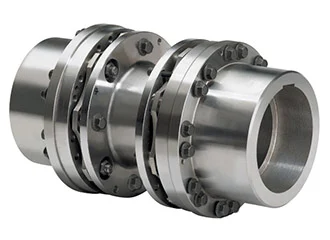- “Cam and groove lock couplings
- Material:Aluminium/Stainless Steel/Brass / Polypropylene
- Type : A/B/C/D/E/F/DC/DC”
- Compressed air lines couplings: HOSE END/Male or Female
- Shank type fittings : TYPE KC/ TYPE K M
- Clamps : DOUBLE BOLT / WORM DRIVE
Industrial couplings are mechanical devices used to connect two shafts or components together to transmit power or allow for the movement of fluids, gases, or other substances between different parts of a system. These couplings are essential in various industries to ensure smooth and efficient operation of machinery and equipment. Here’s a detailed overview of industrial couplings:
Functions of Industrial Couplings:
- Power Transmission:
- Couplings transmit rotational motion and torque from one shaft to another, enabling the transfer of power between different machine components.
- Misalignment Compensation:
- Industrial couplings accommodate shaft misalignment (angular, parallel, or axial), reducing stress and wear on connected equipment.
- Vibration Damping:
- Couplings can help dampen vibrations and shocks, enhancing the stability and longevity of machinery.
- Torsional Flexibility:
- Some couplings provide torsional flexibility to protect machinery from torque fluctuations and shock loads.
Types of Industrial Couplings:
- Gear Couplings:
- Gear couplings transmit torque between two shafts through meshing gears. They are robust and suitable for high torque and high-speed applications.
- Flexible Couplings:
- Flexible couplings accommodate misalignment and damping vibrations. Types include elastomeric (rubber), jaw, and grid couplings.
- Rigid Couplings:
- Rigid couplings are used when precise shaft alignment is required. They provide a solid connection without flexibility.
- Fluid Couplings:
- Fluid couplings use hydraulic fluid to transmit torque and provide smooth acceleration in applications such as conveyors and crushers.
- Disc Couplings:
- Disc couplings use flexible metallic discs to transmit torque while allowing for misalignment and damping vibrations.
- Magnetic Couplings:
- Magnetic couplings use magnetic fields to transmit torque across a sealed barrier, suitable for applications requiring a non-contact connection.
Key Features and Considerations:
- Torque Capacity: Choose a coupling with adequate torque capacity to handle the required power transmission.
- Misalignment Tolerance: Consider the type and amount of misalignment the coupling can accommodate (angular, parallel, or axial).
- Maintenance Requirements: Some couplings may require periodic inspection and lubrication to ensure optimal performance and longevity.
- Environmental Conditions: Select couplings that are suitable for the operating environment (e.g., temperature, humidity, corrosive atmosphere).
Applications of Industrial Couplings:
Industrial couplings are used in various industries and applications, including:
- Power Generation: Turbines, generators, and pumps.
- Manufacturing: Conveyors, mixers, compressors, and machine tools.
- Mining and Quarrying: Crushers, screens, and conveyor systems.
- Oil and Gas: Pumps, compressors, and drilling equipment.
- Marine and Shipbuilding: Propulsion systems and deck machinery.
Selection Considerations:
When selecting an industrial coupling, consider the following factors:
- Type of Machinery: Choose a coupling that suits the specific requirements and operating conditions of the machinery.
- Shaft Sizes: Ensure compatibility between the coupling and shaft sizes of connected components.
- Operating Speed and Torque: Select a coupling capable of handling the required speed and torque levels.
- Installation and Maintenance: Consider ease of installation, alignment, and maintenance requirements.
Conclusion
Industrial couplings are vital components in machinery and equipment, enabling efficient power transmission and accommodating shaft misalignment and vibration. By selecting the appropriate coupling for each application, operators can optimize performance, reduce maintenance costs, and prolong the lifespan of industrial systems.


